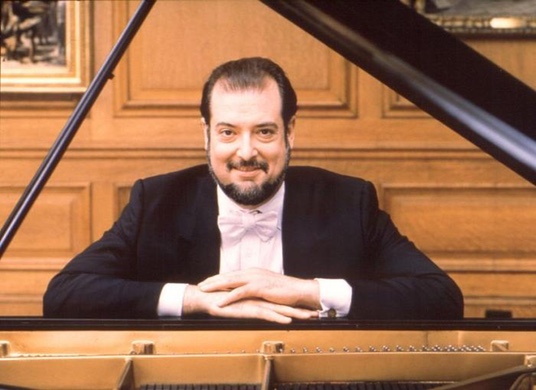Thu 2/7 & Sat 2/9
The Cleveland Orchestra, conducted by Alan Gilbert, created a welcome sonic escape — a dream world as it turned out (although no one was observed sleeping) in this week’s concert. It featured two contrasting works: Franz Joseph Haydn’s Symphony No. 100 in G major and Ferruccio Busoni’s Piano Concerto in C major, Opus 39. Lisa Wong prepared the male voices of the Cleveland Orchestra Chorus heard in the Busoni.
First, as a musical appetizer, the relatively brief Haydn symphony, also known as the “Military,” offered a reminder that even way back then (in 1794), sudden shifts in musical color were popular. This Haydn work changes pace often — lovely opening passages for strings and winds interspersed with lively sequences that suggest marching (lots of brisk percussion and brass) and dancing. It’s a work that still amuses audiences today, as it did last night.
But we were waiting for the main event: A famous soloist and a piano concerto that meant the soloist had to play some 70 minutes with very few breaks — kind of musical sports competition).
Pianist Garrick Ohlsson (if we continue with a sports metaphor) won the championship. He, the orchestra, and men’s chorus brought to life Busoni’s dynamic and inventive creation. The partnership between piano, orchestra and chorus seemed both forceful and electrifying. Watching Ohlsson’s giant frame hovering over the piano, large hands in complete control, brings to mind my Lord of the Rings favorite, Gandalf — a kind soul essential to the plot. But at the piano, Ohlsson did more than hover; he dominated and controlled the way we might expect, say, LeBron James, to (cooperatively) play with others.
This is not the soloist’s first performance of the Busoni in Severance Hall. He played and recorded this piece there 30 years ago under the baton of Christoph von Dohnanyi. (It’s on YouTube if a sample is needed, but the sound quality there doesn’t do it justice — at least not as compared to hearing it live.) The soloist and orchestra, under Gilbert’s baton, never seemed to fight each other for balance and each offered special musical moments, especially the woodwinds that often soared above the rest like little sparks of joy.
When at the end, the men of the Cleveland Orchestra Chorus (who had been sitting quietly on stage behind the orchestra) rose (also quietly) to sing the last movement, the effect was mesmerizing, almost a blessing. Their voices blended first in a whisper and finally an affirmation. The lyrics were from a poem by Adam Gottlob Oehlenschlager: “Pillars of rock begin/to make deep, soft music…Fully alive now is the dead world/Praising the divinity/the poem falls silent” (“Aladdin”).
Bottom Line: A terrific evening of music and wonderful demonstration by the Cleveland Orchestra of the idea that one does not have to choose between “Classical” (Bach, Haydn, etc.) and “Romantic” (Liszt, Chopin, Busoni): it’s possible and delightful to enjoy both.
